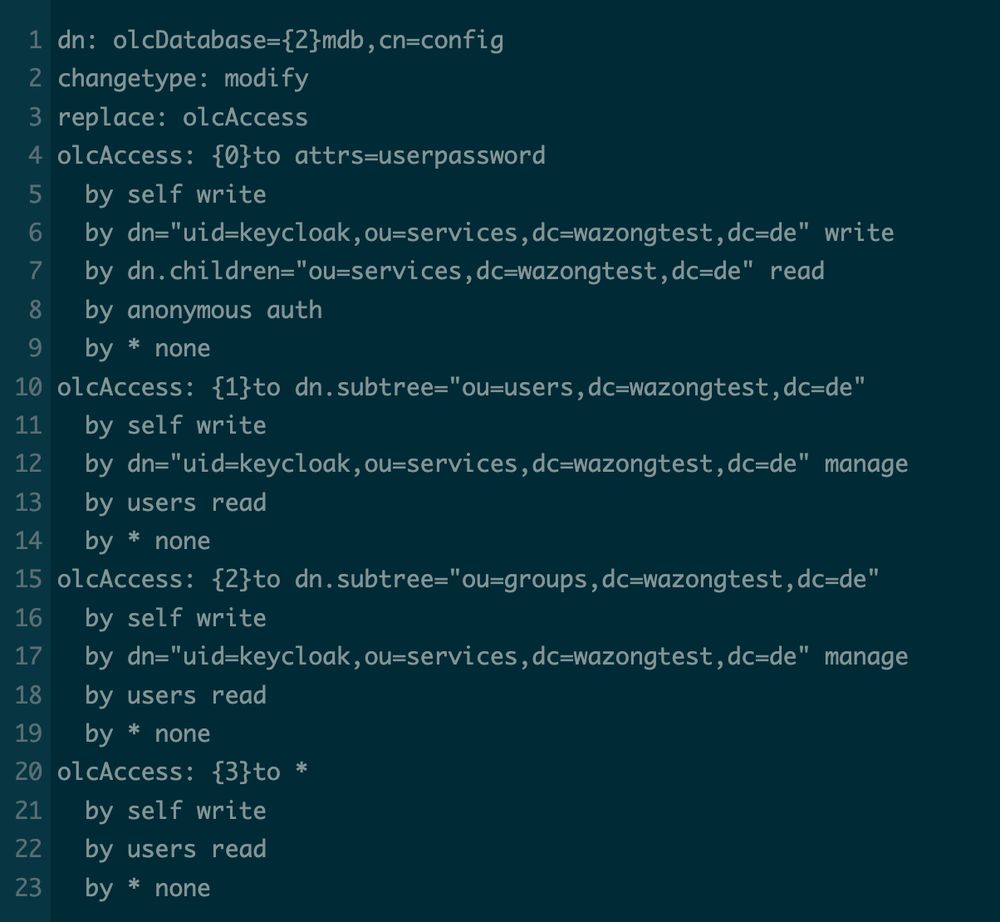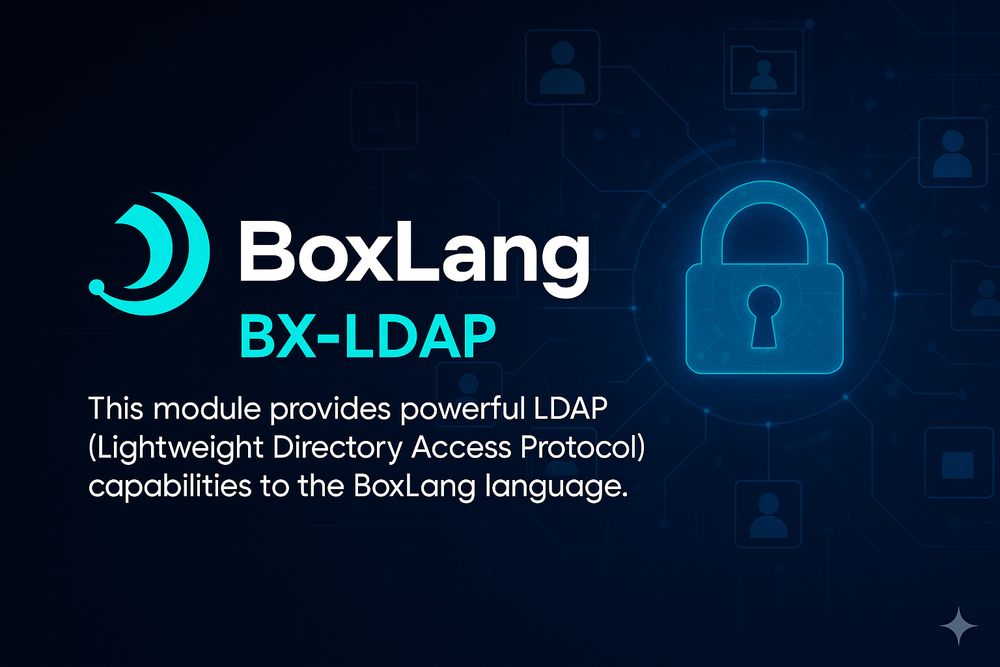Unveiling OpenLDAP Public License 2.8: A Comprehensive Deep Dive into Fair Code Licensing
## Abstract
In this post, we explore the OpenLDAP Public License 2.8 in depth, detailing its origins, core features, applications, challenges, and future outlook. We review its importance within the open source and fair code ecosystem, compare it with similar licensing schemes, and highlight the benefits of community-driven legal frameworks for software development. The discussion weaves together technical insights, historical context, and emerging trends to aid developers and researchers in understanding and optimizing fair code licensing.
## Introduction
Open source software development has evolved alongside legal frameworks that protect the rights of both contributors and users. The **OpenLDAP Public License 2.8** represents a unique approach in balancing openness with fair compensation, ensuring that software remains both accessible and protected. This post delves into its intricate details—from its historical origins to the modern-day challenges and innovations surrounding it. We also compare this license with other well-known licenses (such as the MIT License, GNU GPL v3, Apache 2.0, and BSD 3-Clause) to provide a holistic view of how fair code licensing is being shaped in the digital era.
By understanding these frameworks, developers can make informed decisions about which licensing models best support their projects while fostering community and innovation.
## Background and Context
### Historical Origins
The OpenLDAP Public License was born out of the need to safeguard free software contributions while addressing the exploitation frequently associated with overly permissive licenses. Over decades, legal experts and developers collaborated to create a framework that aligns with **fair code principles**. This historical evolution is documented in detail in the original article and by reputable sources like OSI Licenses and community discussions on Hacker News.
### Ecosystem Importance
In today’s diverse ecosystem, open source projects not only rely on community collaboration but also on clear, robust legal guidance. The OpenLDAP Public License 2.8 stands alongside alternative models like the Open Compensation Token License (OCTL) that integrate blockchain-based innovations. Such integrations are part of a broader ecosystem debate on how to sustain open source funding—topics explored further on pages such as Open Source Funding for Open Source.
### Key Definitions
* **Open Source Licensing:** Legal frameworks enabling software sharing, modification, and redistribution.
* **Fair Code Principles:** Guidelines designed to ensure that contributions receive proper recognition and compensation.
* **Dual Licensing:** A model where software is released under both open source and proprietary licenses to balance community benefits with commercial viability.
## Core Concepts and Features
The OpenLDAP Public License 2.8 is characterized by several core principles that make it a robust and balanced licensing option:
### Legal Robustness
* **Clearly Defined Clauses:** The license provides detailed guidelines to protect both developers and users.
* **Copyleft Elements:** Specific copyleft provisions require that modifications remain open, reducing risks of commercial exploitation without compensation.
### Community-Driven Approach
* **Contribution Safeguards:** Through transparency and defined contributor agreements (though some criticisms highlight challenges without strict CLAs), the license helps secure community input.
* **Historical Influences:** The evolution of this license reflects decades of collective input from prominent organizations (e.g., FSF and GitHub repositories).
### Dual Licensing Compatibility
Dual licensing can offer additional revenue streams and commercial flexibility. However, it poses legal complexities and challenges when merging with strictly permissive licenses. This aspect is compared in a detailed table later in this post.
### Table: Licensing Comparison Overview
**License** | **Compensation Mechanism** | **Openness & Flexibility** | **Key Strengths** | **Dual Licensing**
---|---|---|---|---
OpenLDAP Public License 2.8 | Donation & community funding; encourages fair compensation | Balanced copyleft with defined restrictions | Robust legal structure, community backing | Possible, with legal complexities
MIT License | Minimal; relies on external funding | Extremely flexible and permissive | Simplicity, widespread adoption | Supports dual licensing
GNU GPL v3 | Redistribution under same terms | Strong copyleft; modifications must remain open | Community impact, transparency | Limited, due to strict rules
Apache 2.0 | Commercial agreements (e.g., patents protection) | Permissive with some patent clauses | Wide industry adoption, balanced flexibility | Supports dual licensing
BSD 3-Clause | Donation based | Highly flexible and minimal restrictions | Simplicity and broad applicability | Supports dual licensing
_**Note:** The table highlights that while OpenLDAP Public License 2.8 has restrictions intended to protect developers, its design is meant to encourage a sustainable open source ecosystem._
### Integration with Modern Technologies
Emerging trends show that blockchain-based models, such as those proposed by OCTL, are gaining traction. While the OpenLDAP Public License 2.8 employs a traditional legal framework, discussions within the developer community on platforms like Stack Overflow and GitHub License Usage underscore the potential for integrating blockchain solutions to enhance accountability and fair compensation.
## Applications and Use Cases
The flexibility and robustness of the OpenLDAP Public License 2.8 have attracted projects across multiple domains. Below are a few illustrative examples:
### 1. Enterprise Software Solutions
Many enterprise applications, including network management tools and directory services, adopt this license to secure legal rights while ensuring community input. For example, projects that require high reliability and legal protection for commercial partners often prefer such a balanced license.
### 2. Middleware and Libraries
Middleware solutions that serve as the backbone for many open source ecosystems benefit from the clarity and stability offered by the OpenLDAP Public License 2.8. Its legal clarity supports dual licensing, enabling commercial partners to leverage proprietary models in parallel with community-driven open source contributions.
### 3. Educational Projects
Educational institutions and training programs increasingly adopt this license in their technical curricula. The defined legal framework fosters a secure environment for students to contribute code without the fear of exploitation. This use case enhances both learning and innovation.
### Bullet List: Key Use Cases
* **Enterprise Applications:** Secure and balanced framework for corporate partnerships.
* **Open Source Middleware:** Legal protection for core libraries and toolkits.
* **Educational Initiatives:** Safe environment for students and emerging developers.
* **Dual Licensing Models:** Combining open source innovation with commercial licensing potentials.
## Challenges and Limitations
Despite its strengths, the OpenLDAP Public License 2.8 faces several challenges:
### 1. Ambiguity in Certain Clauses
Critics note that the language in some sections can be ambiguous regarding user rights and obligations. This ambiguity can create legal uncertainties, especially when mixing with more permissive licenses like the MIT or BSD licenses.
### 2. Enforcement Difficulties
* **International Enforcement:** Enforcing the license’s provisions across different jurisdictions can be challenging due to varying legal interpretations.
* **Contributor Verification:** The absence of rigorous Contributor License Agreements (CLAs) may expose projects to risks from unverified contributions, potentially hindering legal recourse.
### 3. Commercial Exploitation Concerns
There remains a risk that large corporations might leverage open source contributions under this license without offering adequate compensation to original developers. This has sparked debates in communities such as Reddit’s open source forums and on Hacker News.
### 4. Dual Licensing Complexities
While dual licensing offers benefits, it also adds layers of legal and administrative overhead. Projects must carefully balance open source ideals with the commercial viability of secondary licensing models.
## Future Outlook and Innovations
### 1. Integration of Blockchain and Fair Code Funding
A key area for innovation is the integration of blockchain technology to address compensation and contribution verification. Modern models, as discussed on the OCTL website and related resources, illustrate potential pathways where transparent blockchain-based systems enhance the fairness of compensation and track contributions effectively.
### 2. Evolving Legal Frameworks
As open source projects grow in scale and importance, legal frameworks will continue to evolve. Future iterations of licenses like the OpenLDAP Public License 2.8 may incorporate clearer language, more stringent CLAs, and enhanced compatibility with dual licensing models. This evolution could benefit from cross-disciplinary inputs from legal experts, developers, and policymakers.
### 3. Community-Driven Enhancements
Community contributions not only help in the evolution of technology, but also in refining legal documents. Platforms like GitHub and Stack Overflow foster open discussions that pave the way for better licensing practices. A more dynamic integration of community feedback could lead to a more balanced model of fair code licensing in the near future.
### 4. Adoption in New Industries
The future also holds promise for broader adoption across various industries such as blockchain-based finance, digital art, and gaming. Regions with emerging tech hubs may see customized versions of this license to suit regional legal contexts, similar to adaptations discussed in open source funding best practices.
### Dev.to Insights
Developers on platforms like Dev.to have shared insights on how open source licensing is evolving in light of technological advancements. Their experiences underscore the importance of adapting licenses to support both innovation and fair compensation, pointing toward strains of innovation that align well with the OpenLDAP Public License 2.8 framework.
## Summary
In summary, the OpenLDAP Public License 2.8 represents a sophisticated and balanced licensing model for the modern open source landscape. It combines legal robustness with a fair code philosophy that protects both contributors and users. From its historical roots to its current applications in enterprise, middleware, and educational domains, this license has established itself as a critical tool for secure and sustainable development.
While challenges such as ambiguous clauses, enforcement difficulties, and dual licensing complexities exist, the potential for future innovations—including blockchain integration and improved community-driven governance—signals a promising horizon. Developers and project stakeholders should weigh these strengths and limitations when choosing a licensing model for their projects.
## Further Reading and Hyperlinks
For more insights into fair code licensing and open source funding, consider exploring the following authoritative sources:
* OpenLDAP Public License 2.8 Summary – Original Article
* OSI Licenses
* Open Source Funding for Open Source
* GitHub License Usage and Open Source Trends
* OCTL – Blockchain and Fair Code Compensation
Additionally, check out these Dev.to posts for deeper technical explorations:
* Unveiling Open Software License 3.0 – A Comprehensive Summary Exploration and Review
* Exploring Dual Licensing in Open Source Software: A Comprehensive Overview
## Conclusion
The journey through the OpenLDAP Public License 2.8 reveals a licensing model that is as much about legal protection as it is about community empowerment and sustainable innovation. Its balanced approach, despite potential ambiguities and enforcement challenges, provides a vital tool for navigating the complexities of open source distribution and fair compensation.
As technology and industry needs evolve, so too will the frameworks that underpin software development. Developers who invest in understanding and refining these legal tools will be better equipped to foster innovation, maintain community trust, and secure the long-term viability of their projects. In this light, embracing models like the OpenLDAP Public License 2.8—and continuously adapting them—remains essential for the future of open source and fair code licensing.
_By combining historical context, technical insights, and forward-looking innovations, this comprehensive deep dive into the OpenLDAP Public License 2.8 serves as an indispensable guide for developers and researchers alike._
Happy coding and stay legally savvy!






